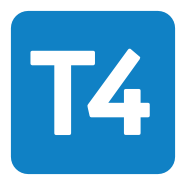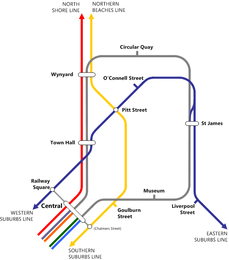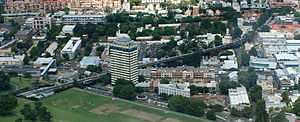Eastern Suburbs railway line
| Eastern Suburbs Line | |||||||||||||||||||||||||||||||||||||||||||||||||||||||||||||||||||||||||||||||||||||||||||||||||||||||||||||||||||||||||
|---|---|---|---|---|---|---|---|---|---|---|---|---|---|---|---|---|---|---|---|---|---|---|---|---|---|---|---|---|---|---|---|---|---|---|---|---|---|---|---|---|---|---|---|---|---|---|---|---|---|---|---|---|---|---|---|---|---|---|---|---|---|---|---|---|---|---|---|---|---|---|---|---|---|---|---|---|---|---|---|---|---|---|---|---|---|---|---|---|---|---|---|---|---|---|---|---|---|---|---|---|---|---|---|---|---|---|---|---|---|---|---|---|---|---|---|---|---|---|---|---|---|
 | |||||||||||||||||||||||||||||||||||||||||||||||||||||||||||||||||||||||||||||||||||||||||||||||||||||||||||||||||||||||||
|
Aerial view of the viaduct across Woolloomooloo. | |||||||||||||||||||||||||||||||||||||||||||||||||||||||||||||||||||||||||||||||||||||||||||||||||||||||||||||||||||||||||
| Overview | |||||||||||||||||||||||||||||||||||||||||||||||||||||||||||||||||||||||||||||||||||||||||||||||||||||||||||||||||||||||||
| Termini |
Redfern Bondi Junction | ||||||||||||||||||||||||||||||||||||||||||||||||||||||||||||||||||||||||||||||||||||||||||||||||||||||||||||||||||||||||
| Stations | 7 | ||||||||||||||||||||||||||||||||||||||||||||||||||||||||||||||||||||||||||||||||||||||||||||||||||||||||||||||||||||||||
| Services | T4 Eastern Suburbs & Illawarra Line | ||||||||||||||||||||||||||||||||||||||||||||||||||||||||||||||||||||||||||||||||||||||||||||||||||||||||||||||||||||||||
| Operation | |||||||||||||||||||||||||||||||||||||||||||||||||||||||||||||||||||||||||||||||||||||||||||||||||||||||||||||||||||||||||
| Opening | 23 June 1979 | ||||||||||||||||||||||||||||||||||||||||||||||||||||||||||||||||||||||||||||||||||||||||||||||||||||||||||||||||||||||||
| Owner | RailCorp | ||||||||||||||||||||||||||||||||||||||||||||||||||||||||||||||||||||||||||||||||||||||||||||||||||||||||||||||||||||||||
| Operator(s) | Sydney Trains | ||||||||||||||||||||||||||||||||||||||||||||||||||||||||||||||||||||||||||||||||||||||||||||||||||||||||||||||||||||||||
| Depot(s) | Mortdale | ||||||||||||||||||||||||||||||||||||||||||||||||||||||||||||||||||||||||||||||||||||||||||||||||||||||||||||||||||||||||
| Rolling stock | T sets | ||||||||||||||||||||||||||||||||||||||||||||||||||||||||||||||||||||||||||||||||||||||||||||||||||||||||||||||||||||||||
| Technical | |||||||||||||||||||||||||||||||||||||||||||||||||||||||||||||||||||||||||||||||||||||||||||||||||||||||||||||||||||||||||
| Track length | 7km | ||||||||||||||||||||||||||||||||||||||||||||||||||||||||||||||||||||||||||||||||||||||||||||||||||||||||||||||||||||||||
| Track gauge | 1,435 mm (4 ft 8 1⁄2 in) standard gauge | ||||||||||||||||||||||||||||||||||||||||||||||||||||||||||||||||||||||||||||||||||||||||||||||||||||||||||||||||||||||||
| |||||||||||||||||||||||||||||||||||||||||||||||||||||||||||||||||||||||||||||||||||||||||||||||||||||||||||||||||||||||||
The Eastern Suburbs Railway is a commuter railway line in Sydney constructed in the 1970s.[1] It is operated by Sydney Trains and has stations at Martin Place, Kings Cross, Edgecliff and Bondi Junction. In addition, it has dedicated platforms at Town Hall, Central and Redfern stations. All of these stations are underground. The Eastern Suburbs railway connects with the Illawarra line at Erskineville, forming the Eastern Suburbs & Illawarra Line. The line features turnbacks at Central, Martin Place and Bondi Junction. It operates a service every 3 to 5 minutes during peak hours, 8 to 10 minutes at other times and 8 to 10 minutes on weekends.
Design

The twin-track Eastern Suburbs line consists of eight stations connected mainly by viaduct and tunnel. The stations are finished in terrazzo and colourful tiles.
Alignment
From a tunnel portal north of Erskineville, the Eastern Suburbs line runs north to Redfern, then Central Station. The line then heads north-west to Town Hall, then east to Martin Place before emerging near the Art Gallery of New South Wales onto a viaduct across the suburb of Woolloomooloo. The line goes back underground at Kings Cross, before emerging onto a viaduct across Rushcutters Bay. The line goes back underground at Edgecliff, then heads south-east through tunnel to emerge at a cutting in Woollahra, the site of a vestigial station. The lines go back underground at Bondi Junction.
History
Bradfield's plans

The Eastern Suburbs Railway was a part of engineer Dr John Bradfield's scheme for Sydney's railways (the Bradfield Scheme). The alignment and profile for the line was set in 1926 and construction on the railway was started by the NSW Department of Railways. Construction commenced with the building of stub tunnels at St James Railway Station. These tunnels ran southward from St James rising to clear the City Circle lines and turned east towards the Eastern Suburbs. They then halted pending further construction after the completion of the railway from Central to St James and Wynyard.
The railway was planned to continue approximately parallel to Oxford Street to Bondi Junction. However, the intervention of the Great Depression and Second World War halted construction on all Bradfield's plans including the Eastern Suburbs Railway causing its abandonment.
The 1947 plan
Post War, the construction of the railway returned to government agenda. The City and Suburban Electric Railways (Amendment) Act, Act No. 13 of 1947, made provision for the construction of further electric railways in the City of Sydney, serving the eastern, southern and south eastern suburbs. This Act amended the earlier scheme proposed by Bradfield in 1916, which had provided for the previous construction work. The City and Suburban Electric Railways (Amendment) Act of 1947 made provision for the construction of 44 miles (71 km) of new suburban electric railways. New construction was carried out including the construction of four underground platforms beside Central Station at Chalmers Street (only two would be used for the Eastern Suburbs line, the other two would be used for the Southern Suburbs line). These works were a diversion from Bradfield's plan which had trains emanating from St James not Central. Further, instead of running parallel to Oxford Street, the line would run via Kings Cross to Bondi Junction. The second stage of works would extend the line through North Bondi (Muriverie Road Station) and Rose Bay (Dover Road Station).
Works on the four platforms was approximately 30% completed in 1952 when the project was abandoned again. The project was not revived until the mid-1960s.
The 1967 plan
In 1967 the New South Wales Government awarded the contract for the civil and structural design of the entire line to the Snowy Mountains Hydro-electric Authority (SMA), the Commonwealth Government agency responsible for the design and construction of the Snowy Mountains Scheme in south-eastern Australia. The line was planned to run to Bondi Junction via Kings Cross - as planned in 1947 - but then continue to Kingsford via Randwick and the University of New South Wales. Various station options were considered including a station at Rushcutters Bay, but the final conclusion was the line would run Central (by finishing the incomplete platforms), Town Hall (making use of two hitherto unutilised platforms), Martin Place, Kings Cross, Edgecliff, Woollahra, Bondi Junction, Charing Cross, Frenchmans Road, Randwick Junction, University of NSW and Kingsford (Nine Ways).
Due to terrain factors, the line would be composed of dual single-bore tunnels and have two significant twin track concrete viaduct structures at Woolloomooloo and Rushcutters Bay. In order to reduce costs and more effectively stage the project the line was curtailed to Bondi Junction (original plans suggested Edgecliff, but Bondi Junction provided a better option for patronage and road congestion relief reasons). Further, only a single-track connection would be made to the existing Sydney network at Erskineville, with provision for double-tracking at a later stage (along with a new underground platforms at Redfern).
The final contract for the line involved approximately 10 kilometres of single track tunnel structures and crossovers, four underground stations (Martin Place, Kings Cross, Edgecliff and Bondi Junction - Town Hall already existing and Central was partially complete) and one surface station (Woollahra, in a cutting), two 772-metre concrete viaducts and a further 800 metres of surface works. At Kings Cross a road tunnel bypass of the commercial centre would be constructed coincidentally.
1976 review
Work progressed slowly and at significant expense. Industrial action spurred by ethnic tensions delayed the works as did an injunction taken out by residents of the exclusive suburb of Woollahra to prevent round the clock tunnelling works, spawning a chain of legal action not completed in the High Court of Australia until 1982 - some three years after the project was completed.[2] With the coming to power of the Wran Government in May 1976 a Board of Review of the Legislative Assembly was set up to examine the merits and feasibility of the Eastern Suburbs Railway project. At this time all tunnelling works were complete to Bondi Junction and much of the track was laid, however the stations themselves were mostly incomplete. The Board was asked primarily whether the project continue or be abandoned yet again.
The Board made the following recommendations:
- The line be completed and opened to Bondi Junction
- The line be abandoned beyond Bondi Junction
- Stations be scaled back: the report suggested inter alia no shopping plaza be constructed at Bondi Junction as planned (Martin Place being further advanced should retain its shopping plaza), the number of escalators be reduced, platforms only be tiled four carriage lengths as only four carriage trains would be used at opening, and that the size, scale and finish of bus-rail interchanges at Bondi Junction and Edgecliff be reduced
- New work be commissioned to integrate the line to the existing Illawarra Line, including: constructing a second track from Central to Erskineville, underground platforms at Redfern Station and a turnback tunnel (for trains coming from the Illawarra Line) at Martin Place
The recommendations were almost entirely accepted - the line would be truncated to Bondi Junction (but platforms would be tiled their full length). Further, due to residents' demands, costs and poor patronage expectations, Woollahra station would not be completed (there remains a vestigial station on site with platform walls in place). Lastly it was decided to build the Bondi Junction Bypass section of the Eastern Suburbs Freeway (a road otherwise unbuilt)—now Syd Einfeld Drive.
Opening
The Eastern Suburbs line was finally opened on 23 June 1979 by then New South Wales premier Neville Wran around 50 years after it was first planned and 31 years after construction began - construction had taken place at a rate of approximately 250 metres per year on average. Only double-deck rolling stock was used on the line - the first line in Sydney to become all double-deck. When opened, the integration with the rest of the Sydney network (announced as a result of the 1976 report) had not been completed, so the line operated as a short-lived self-contained shuttle service between Central and Bondi Junction at five-minute frequencies during the day and peak. The additional works were completed for the 1980 timetable change [3] integrating the line into the Illawarra line, thus helping to relieve congestion by removing Illawarra line services from the City Circle.
The line terminus of Bondi Junction was originally planned to be an intermediate terminus, its terminal capacity was lower than the running line capacity. This in turn required new work be carried out from 2004-2006 to be a more efficient terminus as part of the Rail Clearways Project.
A Bondi Beach railway
In 1999 a private proposal to extend the railway to Bondi Beach at a cost of $197 million received backing from the Federal Government but the scheme did not go ahead. The project proposed to extend the Eastern Suburbs Railway from its current terminus at Bondi Junction to a new underground station at Bondi Beach. The Bondi Beach Railway Company, owned by Lend Lease Infrastructure and the Macquarie Bank, proposed to build and maintain the railway and to operate it for a 30-year term. The physical works involved the extension eastwards of the existing tunnels at Bondi Junction with the construction on a new 2.6–kilometre single-track tunnel to the proposed Bondi Beach station site under South Bondi Park.
There was considerable opposition by local residents to the project, with concerns including the site chosen for the station, the impact on bus services and the proposed station use fare surcharge.[4] When the Airport Link Company, the operator of the Airport line went into receivership due to low patronage in 2000, interest in constructing the Bondi Beach extension collapsed. The plan has now been abandoned.
See also
- List of closed Sydney railway stations
- Illawarra Railway Line
- Cronulla Railway Line
References
- ↑ Eastern Suburbs Railway for Sydney Brady, Ian A. Australian Railway Historical Society Bulletin, July; August; September 1979 pp146-171;173-188;210-220
- ↑ "Codelfa Construction Pty Ltd v State Rail Authority of NSW (1982) 149 CLR 337; [1982] HCA 24". AustLII. Retrieved 18 August 2009.
- ↑ Sydney Suburban and Interurban Train Timetables 1980, Effective 6 July 1980, SRA
- ↑ Debnam, Peter. "Bondi Beach Rail Proposal". Hansard. NSW Parliament. Retrieved 8 August 2011.
